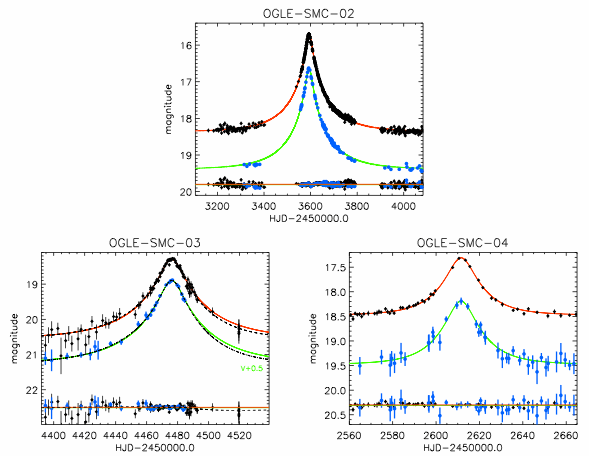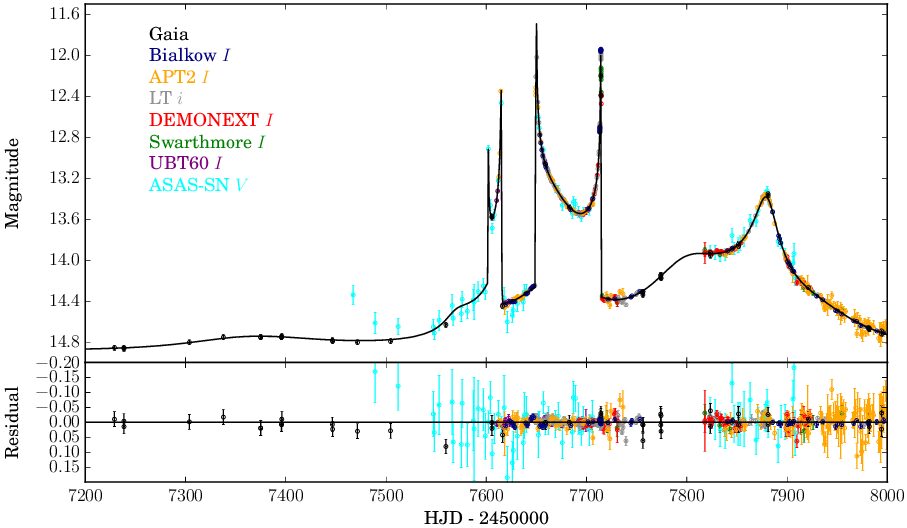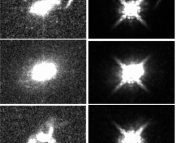Title: Constraining Black Hole Natal Kicks with Astrometric Microlensing
Authors: Jeff J. Andrews, Vicky Kalogera
First Author’s Institution: Physics Department, University of Florida, USA
Status: Accepted to ApJ [open access]
Supernovae are the highly energetic, explosive deaths of stars. They play many key roles throughout the Universe, from the production of elements to the formation of dense stellar cores such as neutron stars and black holes.
However, important aspects of this explosive endpoint of stellar evolution remain shrouded in mystery. One such unanswered question is precisely how the supernova mechanism impacts the final trajectory of the stellar remnant. And that’s the motivation behind today’s paper: to better understand the kicks, or velocities, that are imparted to the black holes formed in supernovae.
Binaries, Runaways and Kicks
Many stars are found in binaries, or in pairs which orbit in a bound system around their center of mass. Things become more complex when one of the stars explodes as a supernova and ejects a large fraction of its mass, potentially forming a black hole that travels at a velocity known as the kick velocity. This sudden mass loss can have significant effects on the other star, or the companion, which can be ejected from the binary. Since the companion has left the binary system, it is referred to as a runaway star which travels at a runaway velocity.
Given that the lives of stars in binaries are so closely related, it’s possible that the end states of the black hole and the runaway star are also related. With this in mind, the authors of today’s bite hoped to determine if measurements of the system’s runaway velocity can be used to infer properties about the black hole. In short, can a system’s runaway velocity tell us something about the black hole’s natal kick velocity?
Monte Carlo Simulations to the Rescue
To see if this was the case, the authors performed Monte Carlo simulations for a variety of primary and companion masses, pre-supernova orbital eccentricities (or how circular the orbit is), and kick velocities. Under the assumption that the primary star exploded as a supernova and collapsed to form a black hole, the simulations generated 105 possible outcomes for the system. From this data, they were then able to extract the runaway velocity of the system.

The results from one set of simulations are shown in Figure 1, which gives the likelihood of a given runaway velocity in units of the black hole kick velocity, vk. Each panel shows a different combination of primary and companion masses, with the black hole kick velocity indicated by the different coloured curves. A value of 1 indicates that the runaway velocity is equal to the kick velocity. Since these plots are centered on 1, it appears that the runaway velocity is indeed a good proxy for the black hole kick velocity, at least to within 50% but often much closer. Indeed, measurements of a binary’s runaway velocity can help us to constrain the kick velocity a black hole receives at birth.
Testing the Results on Microlensing Data
Next, the authors wanted to test their results on real data. Thanks to new data spanning 6 years of observations, two research groups, led by researchers at the Space Telescope Science Institute and the University of California, Berkeley, were able to determine certain properties of the black hole known as MOA-11-191/OGLE-11-0462 using microlensing.
Microlensing occurs when light from background objects is distorted and magnified as it passes by a very massive foreground object, such as a black hole. Using both photometric and astrometric measurements, the two groups found three solutions for the mass, distance, and runaway velocity of MOA-11-191/OGLE-11-0462.
Under these conditions, the authors were then able to estimate the natal kick velocity imparted to MOA-11-191/OGLE-11-0426, calculating an upper limit of 100 kms-1. While this is a somewhat broad estimate, what’s important is that this method can be applied to other microlensed systems to predict black hole kick velocities. The tricky part is finding suitable systems with sufficient photometric and astrometric data, but that’s for another bite.
Astrobite edited by Janette Suherli and Olivia Cooper
Featured image credit: NASA’s Goddard Space Flight Center/Jeremy Schnittman, cmglee (CC BY-SA 4.0) via Wikimedia Commons




